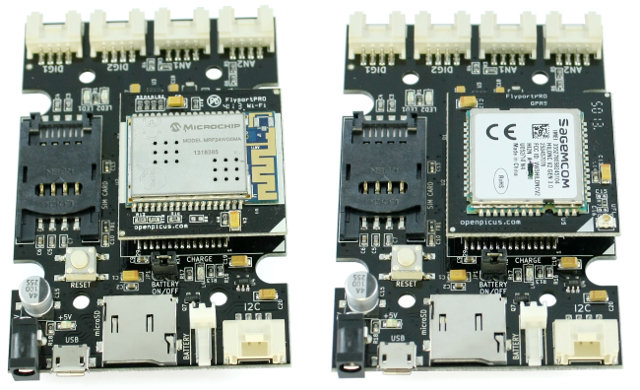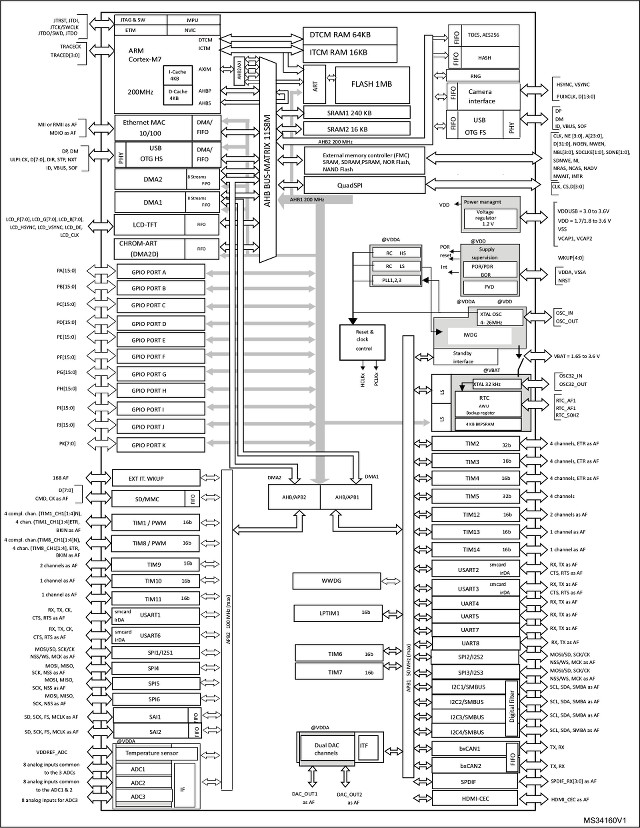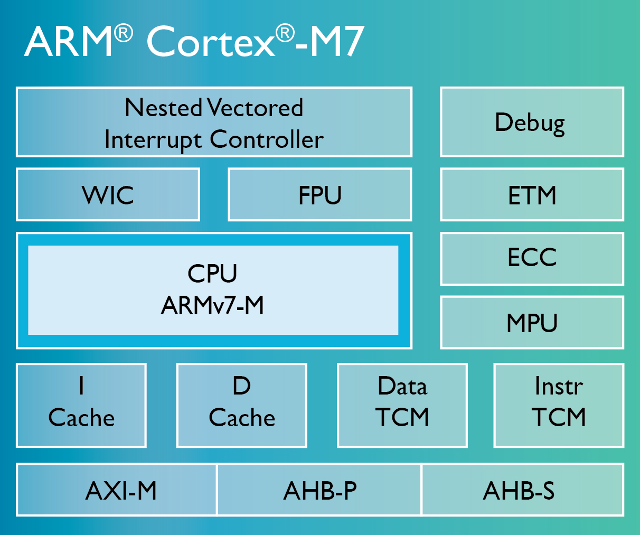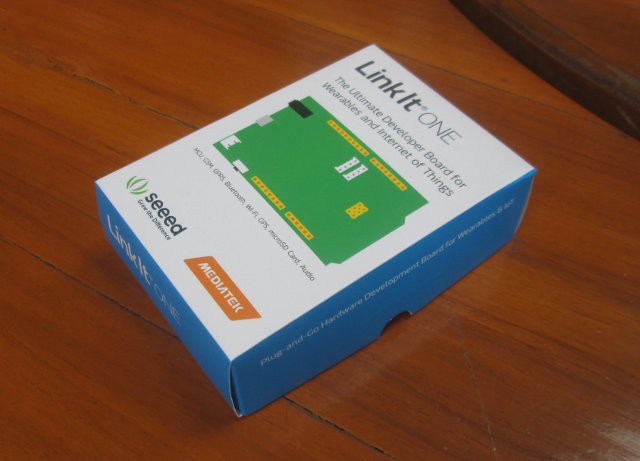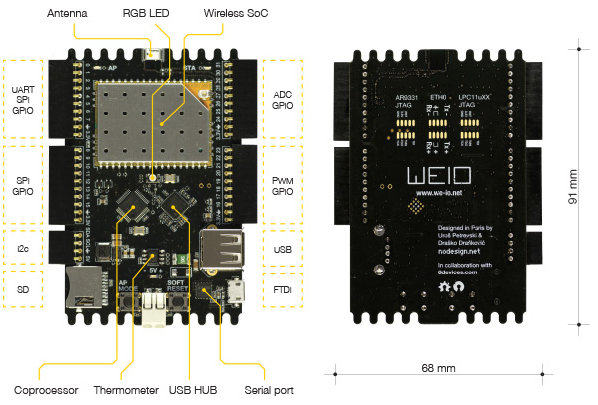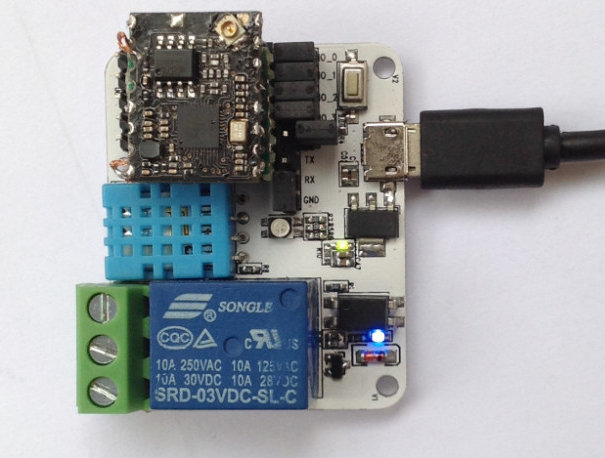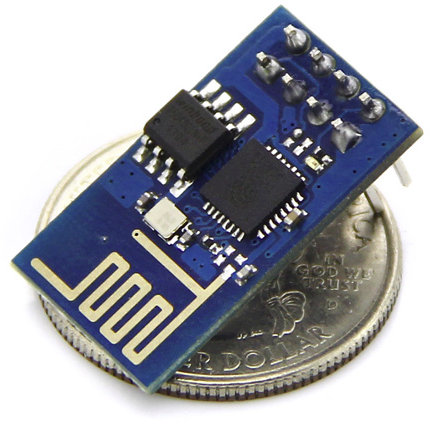openPicus has launched two new development kits for the Internet of Things with either Wi-Fi or GPRS connectivity, based on their FlyportPRO modules featuring a 16-bit Microchip PIC24 MCU, and sharing the same baseboard. These kits can be used as a Web server with firmware update over the air (FOTA) (Wi-Fi version only) among other things, and support TCP, UDP, FTP, & HTTP protocols, as well as MQTT (Message Queue Telemetry Transport), a light weight messaging protocol running on top of the TCP/IP protocol, used when a small code footprint is required and/or network bandwidth is limited. openPicus FlyportPRO Wi-Fi and GPRS modules share mostly the same specifications: MCU – Microchip PIC24FJ256GB206 16-bit MCU @ 32 MHz with 256KB Flash, 96KB RAM External Storage – 16Mbit Flash memory (for FOTA), 64Kbit EEPROM Connectivity GPRS Module – SAGEM HILONC GPRS Transceiver (quad band: 850, 900, 1800, 1900 MHz) with uFL connector for external […]
STMicro STM32F7 Series is the First ARM Cortex-M7 MCU Family
Right after ARM’s Cortex-M7 announcement, STMicro has listed STM32F7 MCU family based on the latest ARM core on their website. The family is comprised of 20 different MCUs with various flash size, packages, and with or without a crypto/hash coprocessor. The company expects their STM32F756xx microcontrollers to be used for motor drive and application control, medical equipment, industrial applications such as PLC, inverters, and circuit breakers, printers & scanners, alarm systems, video intercom, HVAC, home audio appliances, mobile applications, Internet of Things application, and wearable devices such as smartwatches. STM32F7 MCUs share the following key features: Cortex-M7 core @ 200 Mhz (1000 CoreMark/428 DMIPS) with L1 cache (4KB I-cache, 4KB d-cache) 320KBytes of SRAM with scattered architecture: 240 Kbytes of universal data memory a 16 Kbytes partition for sharing data over the bus matrix 64 Kbytes of Tightly-Coupled Data Memory (DTCM) for time critical data handling (stack, heap…) 16 Kbytes […]
ARM Introduces Cortex-M7 MCU Core for IoT, Wearables, Industrial and Automotive Applications
ARM has just announced Cortex-M7 processor based on ARMv7-M architecture, with double the compute and digital signal processing (DSP) capability of ARM Cortex M4. The latest ARM MCU core targets IoT and wearables applications for the automotive, industrial, and consumer markets including motor control, industrial / home / factory automation, advanced audio, image processing, connected vehicle applications, and so on. Cortex-M7 comes with enhanced DSP instructions, a better FPU (FPv5 with single and double precision support), and tight coupled memory compared to Cortex-M4, according to an Anandtech article. ARM Cortex-M7 also achieves 5 CoreMark/MHz against 3.41 CoreMark/MHz for Cortex M4, and up to 3.23 DMIPS/MHz against up to 1.95 DMIPS/MHz. ARM Cortex-M7 features listed in the press release: Six stage, superscalar pipeline delivering 2000 Coremarks at 400MHz in a 40LP process. AXI interconnect (supports 64-bit transfer) and fully integrated optional caches for instruction and data allowing efficient access to large […]
Getting Started with LinkIt ONE Development Kit for Wearables & IoT
After going through WRTnode Quick Start Guide, it’s now time to play with LinkIt ONE, the IoT development board from Mediatek designed by Seeed Studio. LinkIt ONE is the first Hardware Development Kit (HDK) for Mediatek LinkIt, so there may be a LinkIt TWO, and/or other hardware platforms in the future. LinkIt ONE specifications Let’s quickly go through the specifications first: Processor – Mediatek MT2502A (Aster) ARM7 EJ-STM processor @ 260 MHz System Memory – 4 MB Storage – 16MB Flash for firmware + micro SD slot shared with SIM slot for up to 32GB additional storage Connectivity: Wi-Fi – 802.11 b/g/n (MT5931) with external antenna Bluetooth – BR/EDR/BLE(Dual Mode) GPS – Mediatek MT3332 with external antenna GSM/GPRS – 850/900/1800/1900 MHz band, Class 12 GPS with external antenna Audio – 3.5mm headphone jack (including mic support) – Support for MP3, AAC, and AMR codecs. Serial – Software Serial (Serial), and […]
WeIO is an Open Source Hardware IoT Board Programmable from a Web Browser (Crowdfunding)
WeIO is an open source hardware board for the Internet of things with Wi-Fi connectivity and lots of I/Os designed by nodesign, a French based startup, in collaboration of 8devices, the makers of the Carambola boards. WeIO is powered by an Atheros AR9331 SoC running OpenWRT as well as an NXP LPC MCU for faster handling of I/Os and support for analog I/Os. One interesting aspect of this board is that it can be programmed via a web browser using HTML5 or Python, and it does not rely on the Cloud to store data. WeIO hardware specifications: SoC – Atheros AR9331 MIPS 24K Wireless SoC @ 400 MHz MCU – NXP LPC11xx ARM Cortex M0 MCU for analog I/O and real-time H/W interfaces System Memory – 64 MB DDR2 Storage – 16 MB flash + micro SD slot Connectivity – 802.11 b/g/n Wi-Fi with on-board antenna (AP and STA modes), […]
W908I & W908II Wi-Fi Smart Sockets Support US, EU, UK, or AU Plug Types, Up to 4400W Power
I’ve had a look at several Wi-Fi smart sockets recently. Broadlink SP2 comes with a Chinese plug and supports power monitoring (About $40), Kankun KK-SP3 is more basic but sells only for $20, and runs OpenWRT, and Orvibo Wiwo S20 does not support power monitoring either, but is available with US, Europe, United Kingdom or Australia plug (About $40). If you want a Wi-Fi smart socket with a EU plug, there’s another option: W908I selling for $32 on Chinavasion. Based on the manufacturer website (HaiDian Technology) however, there are four W908I models with US, EU, UK, or AU plugs, as well as four W908II models with a higher power ratings (4400W). Instead of just one socket like socket models, it features a 3-pin socket, a 2-pin socket, and a USB port for charging devices. W908I / W908II specifications: Wi-Fi 802.11 b/g/n Sensitivity – 802.11b: < -84dBm; 802.11g: < -68dBm Output […]
xWifi Open Source Hardware Wi-Fi Module and Dock for the Internet of Things (Crowdfunding)
For some reasons, Wi-Fi modules are pretty popular this year. After modules such as VoCore, AsiaRF AWM002, and ESP8266, here’s come xWifi. This module is based on Mediatek MT7681 SoC which includes a TCP/IP stack like Espressif ESP8622 or TI CC3300, so it won’t run OpenWRT like VoCore or AsiaRF modules. The module only consumes about 350mW during transfer, it will be open source hardware, and the xWifi module plus a dock with a 10A relay, a humidity and temperature sensor, and a LED will go for as low as $17. xWifi module only specifications: SoC – Mediatek MT7681 802.11 b/g/n SoC with 32-bit RISC CPU. Support for Client/softAP mode. Package size 5×5 mm Storage – 512KB SPI Flash (for firmware) I/Os via headers: UART and SPI interfaces. 5x GPIOs PWM Power – 3.3V, GND Power Consumption – ~70mA @ 5V (during RX active) Dimensions – 14 x 17 mm The […]
ESP8266 WiFi Serial Module Costs Just $5
Wi-Fi is great because it’s ubiquitous, and rather fast for a wireless standard. However, it drains batteries fast, and Wi-Fi modules are usually much more expensive than Bluetooth modules for instance. There’s not much that can be done with regards to power consumption, but thanks to ESP8266 module, it’s now feasible to add Wi-Fi to your Arduino board, or others, for just $5 including shipping on Aliexpress, but SeeedStudio also have it for $6.95. If you buy 1,000 pieces, it goes down to about $3 per unit. As reported by Hackaday, this module embeds ESP8266 SoC which takes care off all IP stacks, a bit like Texas Instruments CC3000 SoC, but it’s just much cheaper. Here are some of the specifications of the module (and processor): SoC – Espressif Systems ESP8266 32-bit RISC processor with 802.11 b/g/n support(32-pin QFN package), Interfaces: SDIO 2.0, SPI, UART, I2S Wi-Fi – 802.112 b/g/n […]

